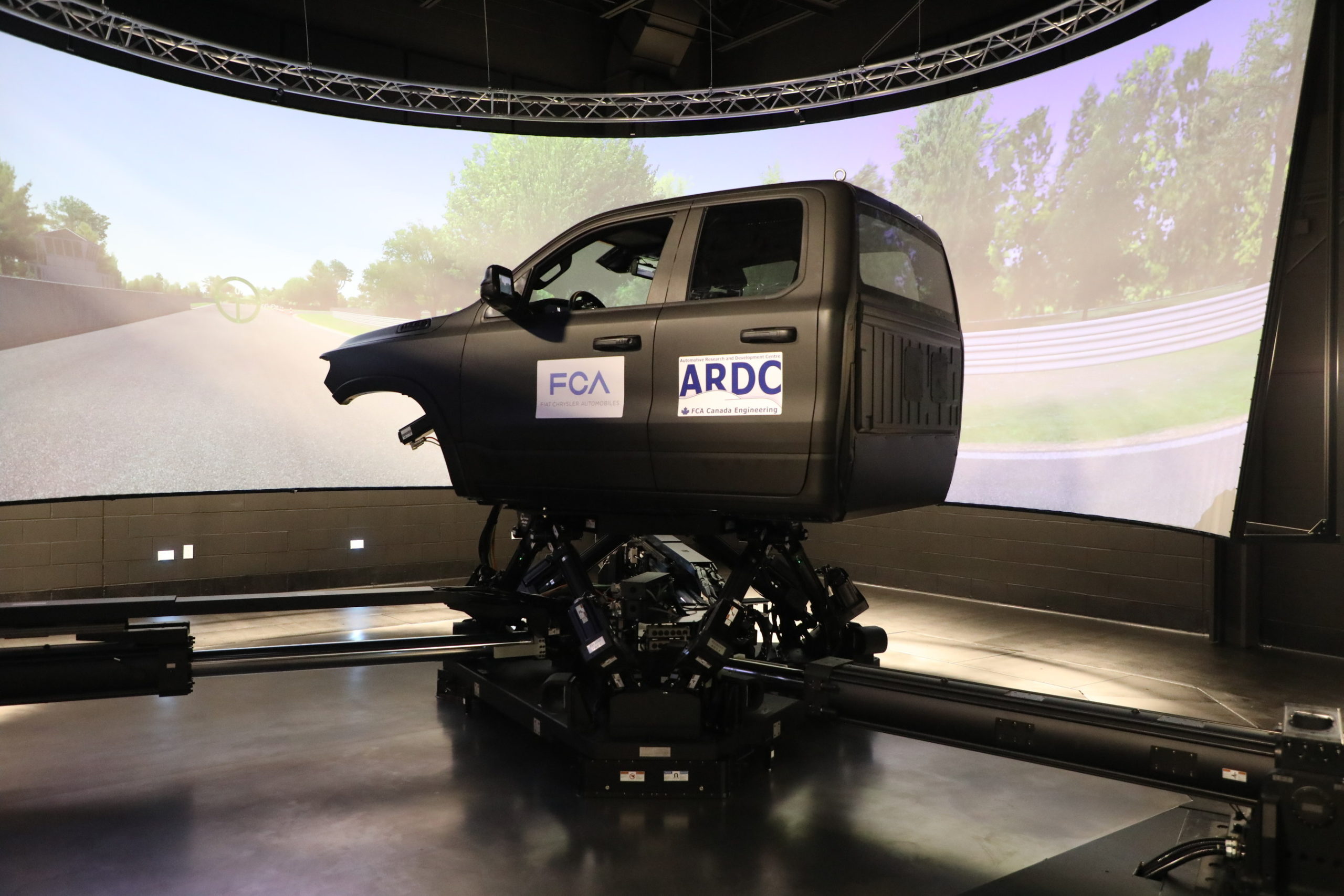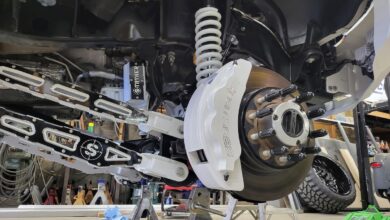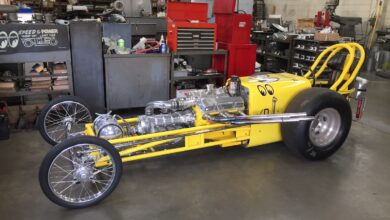FCA Automotive Research and Development Centre Shows Off Advanced Driving Simulator

The FCA Automotive Research and Development Centre (ARDC) inaugurated a new Vehicle Dynamics Simulator (VDS) lab recently, launching the most advanced driving simulator technology available in North America. With nine directions of movement and specific driver calibration, the new simulator closely duplicates the actual driving experience.
“Our new VDS is cutting-edge technology that emulates a vehicle’s driving dynamics in a real time, virtual environment,” said Tony Mancina, Head of Engineering, FCA Canada. “This new technology offers the driver a customized virtual immersion that replicates the ride and handling of a specific vehicle on a multitude of simulated road surfaces and driving environments.”
Most driving simulators make use of six actuators to deliver six “degrees of freedom.” However, to accurately reproduce vehicle ride, handling and acceleration characteristics, the FCA VDS system uses nine actuators to create additional ranges of motion that create a closer immersion to an actual vehicle.
A notable feature of the new VDS is a three-micron cushion of air, which floats the entire 4.5-tonne motion platform above the floor like a hovercraft or air-hockey puck, allowing for a quiet and seamless motion via the massive electric actuators.
The new simulator has the ability to add subsystems, such as brake and steering, Anti-lock Brake System (ABS) and Electronic Stability Control (ESC), to create a hardware in the loop test bench to better meet functional targets. This strategy helps reduce product development times and lower project validation costs.
“The ability to simulate a drive experience with hardware in the loop is key to our engineering efforts and assists in identifying design changes much earlier in the development process,” said Rob Wichman, Head of FCA Vehicle Engineering. “By using simulators, we can create a virtual environment to assess the ride and handling of a vehicle, perform tests on sensor technology for Advanced Driver Assistance Systems (ADAS) applications, evaluate different Human Machine Interface (HMI) configurations, and test for driver distraction and distraction remedies.”
The simulator can be fitted with any vehicle body, road and environment. To create a visual experience on the five projector screens, data is collected by scanning the environments and the different roads, such as FCA’s proving grounds in Chelsea, Michigan. The data is then stitched together to create a real-time virtual environment that can include elevation changes, off-camber roads and potholes.
Initially, the VDS will be used to support Chassis Vehicle Dynamics, but in the future will be used to support development of ADAS and HMI systems. With an overall investment of $10.1 million CAD, including support from the Ontario government through the Southwestern Ontario Development Fund, FCA worked with VI-grade, the developer of the new driving simulator technology.



